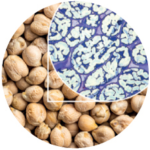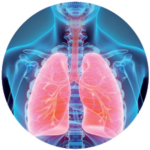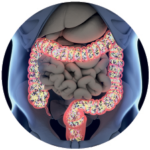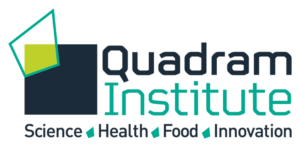Edible East has been working with food and health researchers at The Qudram Institute...
Did you know that your body is home to trillions of microbes? These tiny life forms live everywhere, but the biggest population lives in your digestive system This community of microbes is called the gut microbiome and it keeps us healthy by releasing nutrients, fighting off infections and supporting our immune system. And it’s not just our gut health that the microbiome affects – a healthy microbiome supports the liver, heart, other organs and even our mental health.
You are what you eat, particularly when it comes to your gut microbes
Gut microbes thrive on a diet rich in fruit, vegetables and whole foods that provide complex carbohydrates and fibre. These aren’t easily digested by our own bodies but provide fuel for the gut microbiome. In return the microbes release health-promoting nutrients for us. Heavily processed or sugary foods are rapidly digested and, not only do they make us unhealthy, they can also lead to an unhealthy microbiome.
Prebiotics are complex carbohydrates and fibre from fruit and vegetables (e.g. whole-wheat breads, barley, quinoa, potatoes, oatmeal and beans) that feed our gut microbes.
Probiotics contain live microbes that deliver health benefits.
Fermented foods such as cheese, kefir and sauerkraut are produced by the actions of microbes, that release or produce beneficial compounds. Eating these foods not only delivers those benefits to us, but also supplies us with probiotic microbes.
Friendly moulds also reside in our food. Think of blue cheese, for example!
Scientists at the Quadram Institute
on the Norwich Research Park are working to understand the interactions between the gut microbiome, food and the human body. This will help us develop ways to treat microbiome-related disorders or prevent conditions from developing, helping keep us all healthy throughout life.

Brain
“As we age, the blood/ brain barrier, and the blood/ gut barrier, can become ‘leaky’. This affects lines of communication between the gut and the brain known as the ‘gut-brain axis’. Our research aims to determine what role the gut-brain axis and the microbes in our gut play in the development of diseases like Alzheimer’s.”
Professor Simon Carding, Institute Strategic Programme lead.

Simon Carding

Heart
“By studying how plant material in our food is broken down in the gut, we can identify new ways to regulate nutrient release. We are developing healthier ‘future foods’ specifically designed to address health problems like Type 2 diabetes and cardiovascular disease.
Dr Cathrina Edwards, Research Group Lead.

Cathrina Edwards

Breasts
“Improving patient care is one way to be part of a future solution to breast cancer. By learning more about the relationship between breast cancer and the gut microbiome, we can provide new ideas for better treatments and technologies that will improve outcomes for patients.”
Ms Nancy Teng, leading the BEAM (Breast hEalth And Microbiota) study.

Nancy Teng

Lungs
“Scientists at the Quadram Institute and the University of East Anglia have developed a faster way of diagnosing lung infections, like pneumonia, in hours rather than days. This will improve patient care and sloe the spread of antibiotic resistance.”
Dr Gemma Kay, Researcher.

Gemma Kay

Liver
“The gut and the liver are intrinsically linked and can affect each other’s function. If the gut becomes inflamed and ‘leaky’ it can lead to liver damage. Similarly, compounds made in the liver can affect the balance of ‘good’ and ‘bad’ microbes in the gut.”
Dr Naiara Beraza, Research Group Lead.

Naiara Beraza

Gut
“Understanding how dietary fibre transits through the gastrointestinal tract can help develop novel treatments for people with conditions like IBS as well as other gastrointestinal issues.”
Dr Fred Warren, Research Group Lead.

Fred Warren

